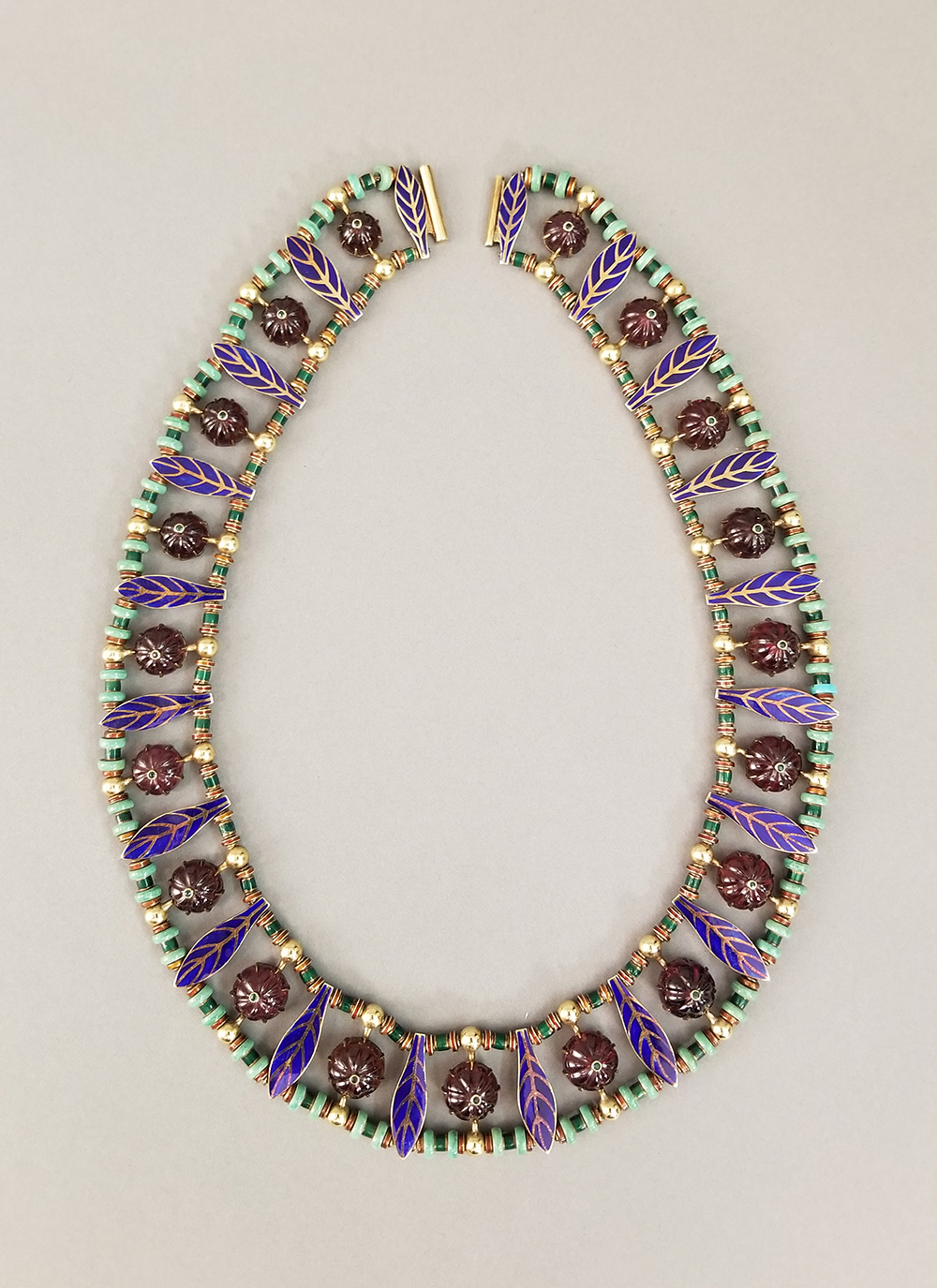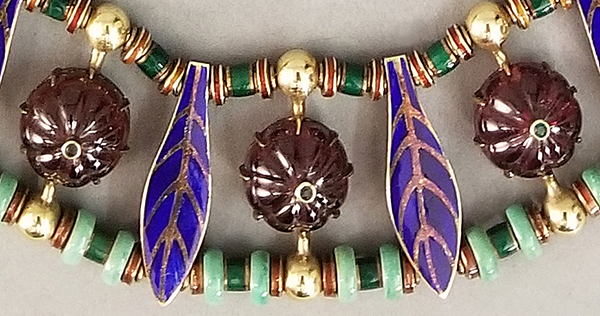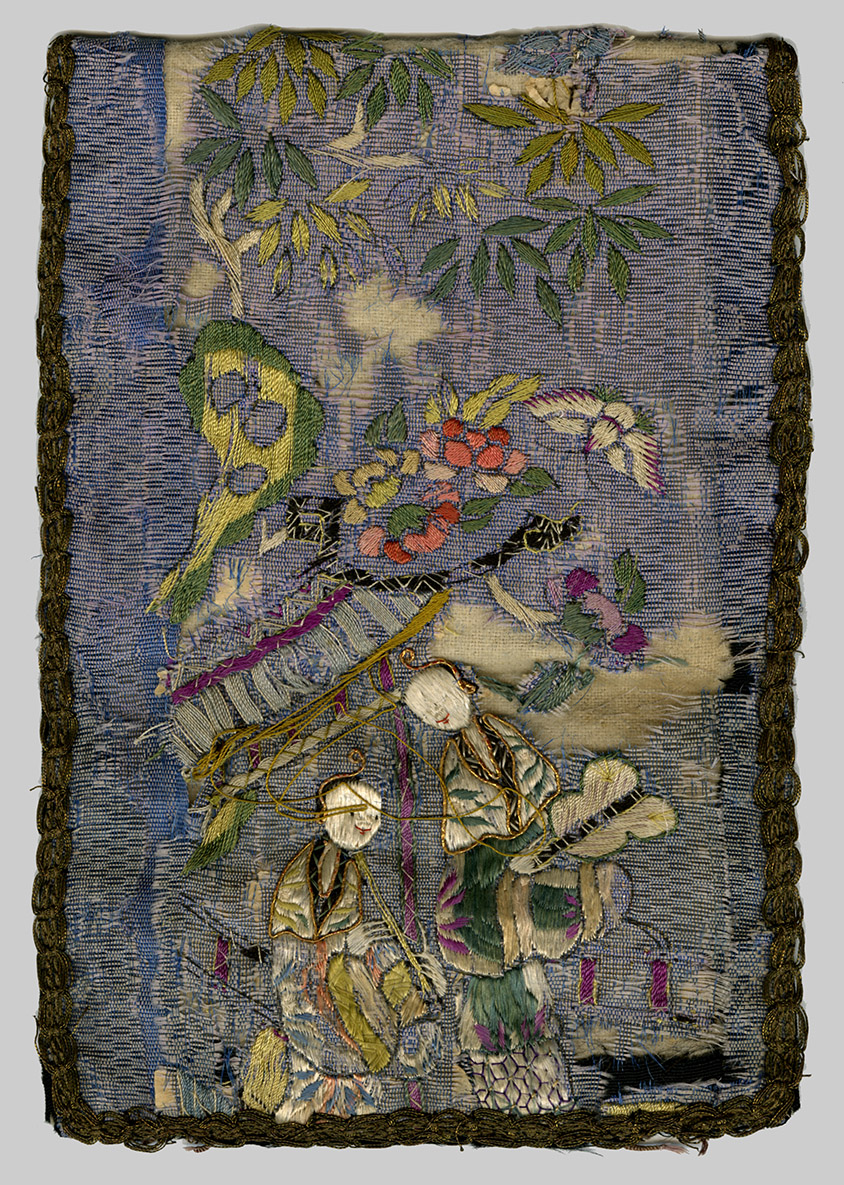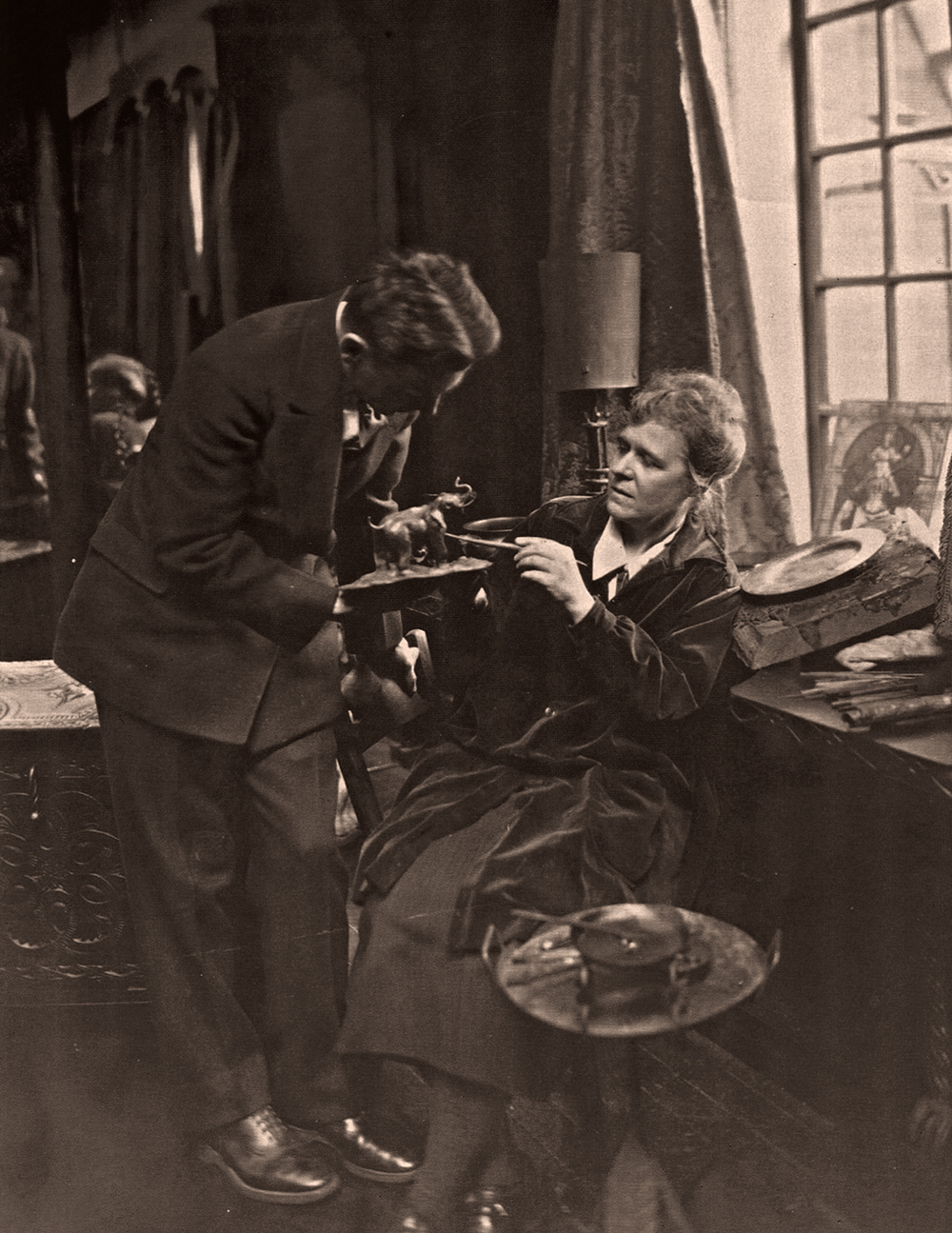Newsletter

Marie Zimmermann, enameled yellow gold and gem-set collar necklace, c. 1937. In the Egyptian style with cobalt blue enameled foliate and floral carved garnet cabochons with bezel-set emerald centers, joined by two rows of carved drum-shaped green or red enameled yellow gold and carved turquoise rhondelle beads.
The Two Red Roses Foundation is pleased to announce the acquisition of a rare and important necklace crafted by Marie Zimmermann, famed metalworker and craftswoman. Accompanying the necklace is a signed Marie Zimmermann handstitched fabric jewelry pouch. A matching bracelet is pictured on page 142 of “The Jewelry and Metalwork of Marie Zimmermann”, Waters, Ahara, Barnes, Cunningham, Yale University Press, 2012.
Born and raised in Brooklyn, New York, Zimmermann was the daughter of wealthy Swiss immigrants and heiress to a sizable fortune. Rejecting her father’s wishes that she study medicine, she chose instead to pursue a career in the arts, first attending the Packer Collegiate Institute and later the Art Students’ League and Pratt Institute. Zimmermann was deeply inspired by “Renaissance Men” — polymaths like Michelangelo and Cellini — and their pursuit of mastery across multiple disciplines. Aesthetically, however, she actually drew inspiration from a variety of art movements — from ancient Egypt and ancient China, to the more recent influences of the Arts and Crafts movement, the German Bauhaus movement, and the more eclectic Art Deco style. Zimmermann also incorporated a plethora of materials into her crafts &emdash; copper, silver, bronze, iron — all of which contributed to a distinct style that is impossible to compartmentalize into one particular artistic movement.
A female pioneer in metallurgy, a field dominated almost exclusively by men, Zimmermann dedicated the first twenty-five years of her career to learning the techniques she would later employ in artworks produced in her own atelier from the 1910s through the 1930s. During this period, she regularly spent ten to twelve hours each day honing her craft. The result was a rich outpouring of work as varied as it is impressive. Zimmermann produced jewelry, candelabra, vessels, garden gates, and more, in a dizzying array of materials. She was also a painter, sculptor, and furniture maker.
In nearly every piece she created, aesthetic inspirations drawn from ancient Egyptian, Classical, and Chinese forms mingle with traces of Art Deco, Art Nouveau, and Art and Crafts motifs. A fearless designer, she experimented eclectically with materials, surfaces, colors, and applied ornamentation, so that a jewel-encrusted steel dagger might recall elaborate Mughal scabbards, or a brilliantly enameled jewel casket with stylized palmettes might evoke ancient Egypt.
Zimmermann’s astonishing creative range was widely recognized by her contemporaries. In 1926, journalist Harriet Ashbrook of the Brooklyn Daily Eagle described Zimmermann as “perhaps the most versatile artist in the country,” going on to proclaim, “there is hardly a beautiful thing which human hands can make that Miss Zimmermann hasn’t made.” Zimmermann hired contractors, whom she trained herself, to help execute her designs, but continued to demand full creative control of their output.
In 1940, Marie Zimmermann closed her studio following a tragic five-year period in which all of her family passed away. In the years following World War II, Zimmermann and life partner, Ruth Allen, spent harsh northeastern winters in Florida at a modest house Zimmermann purchased and dubbed “Here’s Hoping,” in Punta Gorda, on a fifty-acre estate where they enjoyed their love of hunting and fishing. Among those joining them in Florida was Ida Egli, whom Zimmermann met in the 1950s when she dined at Chalet Suisse, a popular restaurant in Manhattan. A friendship would evolve and Egli would eventually join Zimmermann’s domestic staff in Florida and continue in her service until Zimmermann’s death in 1972. Zimmermann is believed to have bequeathed to intimate friends and household staff (including Ida Egli and Melita Bessie Smith, Zimmermann’s cook) some of her most substantial pieces of jewelry, providing a window into her deeply felt sense of independence, loyalty, and generosity. Ida and Melita also jointly inherited Zimmermann’s beloved Punta Gorda home.
This beautifully bejeweled and impeccably crafted necklace along with several other examples from Marie Zimmermann will be part of the first known exhibition dedicated exclusively to jewelry created during the Arts and Crafts period. This exhibition, “Forging an American Style: Jewelry and Metalwork of the Arts and Crafts Movement”, curated by noted author and jewelry expert, Elyse Zorn Karlin will display over 250 beautiful objects from the period’s foremost artists’ ranging from boxes, bracelets and brooches to pendants and metalwork. It will be held in one of the temporary galleries of the upcoming Museum of the American Arts and Crafts Movement in St. Petersburg, Florida and is scheduled to open in December 2019 and close in June 2020. We hope to see you there.


